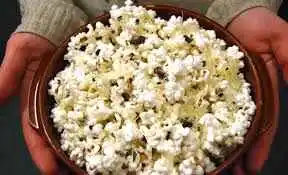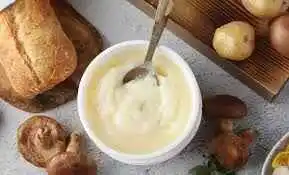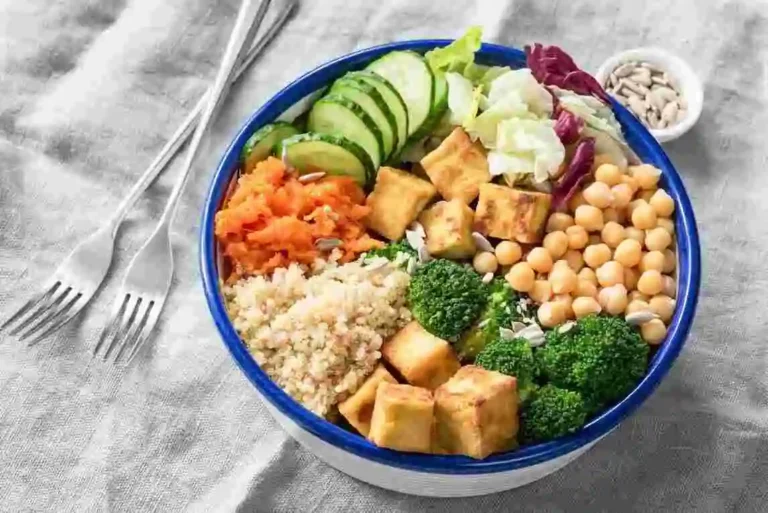Duck Fat
Is Duck Fat good for you?
Duck fat is often seen as an unnecessary product of duck meat. However, it has culinary applications similar to other cooking fats and is being explored as a healthy substitute for swine and beef fat.
Duck fat can be extracted from many duck species’ skin, belly fat, and flesh. The scientific world is investigating it for its similarities with olive oil: It incorporates a health-promoting fatty acid profile, rich in oleic acid, and may lessen the risk of heart disease.
Nutritional Composition of Duck Fat
Duck fat, like other cooking fats, such as soybean oil, is abundant in calories and fats but lacks protein and carbs.
A tablespoon (14 grams) of duck fat offers
- Calories: 130
- Total fat: 14 grams
- Saturated fat: 4.5 grams
- Cholesterol: 15 mg
- Protein: 0 grams
- Carbs: 0 grams
Duck fat, which contains 28% saturated fat, is less high in saturated fats than beef fat (tallow,) and hog fat (lard), which are often utilized in the food sector to add taste and cooking stability while also reducing food waste.
Duck fat contains around 65% unsaturated fatty acids, primarily oleic and linoleic acid, with a fatty acid composition comparable to olive oil and Hass avocados.
Unsaturated fats, such as oleic acid, are considered “healthy” fats due to their anti-inflammatory and antioxidant characteristics. Many people consider saturated fats “unhealthy,” however their health implications are still being debated.
Duck fat has more monounsaturated and polyunsaturated fats than butter and many other animal products compared to butter and many other animal products, duck fat has more monounsaturated and polyunsaturated fats. Additionally, it might have the following significant health benefits: Duck meat’s monounsaturated fat may contribute to the preservation of ideal “good” HDL cholesterol levels.
What is a duck?
Ducks are famous in many cultures due to their eggs, feathers, and flesh. They have been domesticated for these products for at least 4,000 years. Take like chicken and turkey, falls under the category of poultry meat.
Asia has the highest demand for duck goods and poultry. However, duck has been used extensively in Europe, Australia, and North America.
Read on to learn more about the health benefits of digesting duck meat.
Duck Breeds.
There are various sorts of domesticated ducks. Some common breeds enjoyed for their meat are the following:
Mallard ducks. Mulards, frequently recognized as mule ducks, are a hybrid breed that is primarily raised for meat production. Mallard ducks have rather thin human flesh. They are popular among those looking for a healthy duck meat choice.
- Khaki Campbells. These ducks are primarily cultivated for their high-quality eggs, though they are also popular for meat.
- Muscovy Ducks. Muscovy goose and duck breeds are closely related. Their meat is popular in France and is frequently compared to beef because it is lean and red.
- Indian runners. These ducks are known for their egg-laying ability. Indian runners are also observed for their tasty, lean flesh.
- Pekin ducks. A Peking duck is not the same as a Peking duck. Pekin ducks are popular for commercial production because they mature quickly. Pekin ducks were initially bred in China. They are prized for their soft, luscious meat.
- Duck wandering seasons. Duck is typically readily available from May to September in northern latitudes. Ducks can be a valuable source of nutrition. Individuals in northern locations may choose to freeze the meat so that it might be served during the winter.
Duck Availability.
Eating duck fowl. Duck flesh and blood can be eaten prepared or dry. While store-bought duck is frequently regarded as obese, it is typically lower in fat than its chicken counterpart, chicken.
Flavor Cuts of duck human flesh. Breast and legs are popular duck cuts. Duck poultry is recognized for its juicy, black meat. However, breast meat is lighter and milder in flavor than steak from the thighs and legs.
Other duck parts that can be eaten include the gizzard, liver, and heart.
Duck fat has numerous health benefits.
Duck fat has more polyunsaturated as well as monounsaturated fats than butter and many other animal products. And it may provide the following notable health benefits.
- Reduced cholesterol
Duck human form contains monounsaturated fat, which may assist in maintaining optimum levels of “good” HDL cholesterol.
- Lower blood glucose levels.
An increasing amount of studies suggest that meals high in polyunsaturated fat, such as duck fat, can help lower blood glucose levels. This is especially likely if you replace carbohydrates with monounsaturated fats.
- Higher energy levels
Duck meat is high in vital amino acids, which are chemical molecules that help the body operate. Your body converts amino acids into energy.
Duck fat recipes
Try out these two simple duck fat recipes:
- Duck-fat popcorn

In a heavy-bottomed pot, melt 2 tablespoons of duck fat over medium heat.
Add one-third cup of popcorn seeds. Cover and shake to ensure that all of the kernels are coated in fat.
Allow to sit until the kernels pop. When the popping frequency slows, reduce the heat to a minimal level until it stops, then remove the heat.
Serve in a bowl, mildly salted, and topped with cheese.
- duck fat fried fries

Peel and thinly slice a medium potato.
Drizzle with 1-2 tablespoons duck grease, salt, paprika, onion powder, and other spices.
Cook at 425 ℉ (220 ℃) for 20-30 minutes or 5-10 minutes in an air fryer until crispy brown.
What does duck fat taste like?
Duck fat has a rich yet delicate flavor. Duck-fat-cooked foods taste better than they would otherwise. Meals made with duck fat are rich and flavorful. Duck fat has a very bland flavor on its own. Instead, it brings out the nutritional value of the meals it prepares. It added new layers of richness and allowed you to truly experience the essence of the flavors of vegetables, meats, and fish. Did we mention that you can bake with it?
Duck fat versus butter
Duck fat is tastier and healthier than butter. Butter contains 51% saturated fat, whereas duck fat has only 33%. Saturated fat is harmful to cardiovascular health. It is linked to heart problems and other health issues. In general, choose duck fat for your cooking. It makes no concessions in terms of flavor or cooking versatility, and it provides significant health benefits over more regularly used animal fats like butter.
Duck fat smoke point.
Flavor Duck fat has a high smoke point, giving you more options for cooking methods. The temperature that occurs when an oil starts to burn is known as the smoke point. When cooking oil is heated beyond this threshold, it might add an undesirable flavor to the meal it is used to cook or, worse, ignite.
In summary, duck fat’s high smoke point of 375 degrees Fahrenheit expands the range for high-heat cooking. We’re talking about anything from a mild sauté to a deep fry.
Duck fat renders things crispy.
Duck fat is the preferred cooking oil for recipes that demand a crispy finish. What kind of food are we talking about? Roasted potatoes, fries, seared meats (where you want to achieve the perfect crust), and roasted chicken. Crispy is foolproof when cooked using duck fat.
Four Nutritious Facts You Should Know
Chicken is a popular protein choice among consumers, but some people take it so frequently that it becomes uninteresting. If you want to keep a healthy diet while indulging your taste senses, consider duck.
Duck fat is considered a healthy fat.
Duck fat includes less saturated fat and more monounsaturated fats than other animal fats. This makes it more akin to olive oil and an excellent substitute for other oils and fats used in cooking.
In fact, in the world of cooking, duck can be described as liquid gold since it adds a rich, nuanced flavor to meals when utilized in place of other animal-based fats. Rendered duck fat, like olive oil, can help lower your blood cholesterol.
Duck Fat Health Risks
Duck fat is a good source of linoleic acid, but it’s also high in calories and lipids that are saturated. Excessive consumption can lead to several health issues, such as:
- Increased total cholesterol
Duck fat includes more saturated fats than other animal products, including olive oil. A saturated fat-rich diet can cause considerable increases in total cholesterol, raising your risk of heart disease and stroke. Duck fat can be consumed in moderation, but it should not be used in place of natural olive oil or other healthy fat sources.
- Weight gain
Before you decide to utilize duck fat in your cooking, keep in mind its high quantity of calories. One tablespoon of duck fat, which makes up one serving, has 113 calories. However, many duck fat recipes utilize far more than this number, resulting in startlingly large calorie counts.
If you’re attempting to lose down for health reasons, switching from high-calorie items to low-calorie choices is an excellent strategy. Limiting dishes using duck fat in the components may be beneficial.
- Reduced quality
A recent study revealed that rendered duck fat is more susceptible to lipid oxidation during storage than other oils and fats. When food is not in use, it deteriorates due to lipid oxidation.
- Nutritional value of duck meat
amino acids. Duck fowl is a great source of protein. Around 75 grams of cooked duck meat offers 17.6 grams of protein, which is approximately 35% of the daily protein requirement (50 grams). You must consume enough protein each day. It is vital to maintain the health of your body’s outer layer, muscles, and blood.
B Vitamins. B vitamins are frequently found in ducks. It contains a lot of vitamin B3, often known as niacin.
B vitamins help with a variety of biological functions. They improve the health of your immune system, neurological and muscular systems, cognitive abilities, and hormone production.
Iron. One duck breast contains 3.74 grams of iron, which is approximately 14% of the daily requirement for iron (18 grams). This protein transports oxygen through red blood cells.
Omega-fatty acids. Duck chicken offers high levels of short-chain omega-3 fatty acids as well as omega-6 lipids.
Ducks’ systems convert short-chain omega-3s (ALA) to long-chain omega-3s (DHA). Long-chain omega-3s can help prevent chronic diseases such as cancer, heart disease, personality disorders, psoriasis, and asthma.
Selenium. Duck flesh is a good source of selenium. Selenium is a vital mineral that can alleviate symptoms of chronic inflammation and boost the effectiveness of your immune system.
Safe Handling of Duck Poultry
To prevent cross-contamination or food illness, take the following precautions while handling duck meat:
- When keeping duck meat, make sure you use clean containers.
- Wash your fingers, working surfaces, and appliances before and after preparing raw duck.
- Only eat duck poultry that has been completely cooked to 165 degrees Fahrenheit.
- Taking these precautions minimizes the risk of salmonella bacterium causing food illness. Salmonella thrives in the intestines of both animals and humans. When consumed, it can result in a sort of food poisoning that lasts 4 to 7 days.
Possible health advantages of duck fat
Duck fat may be deemed a better choice compared to common animal fats, such as swine lard and beef tallow, due to its relatively low saturated fat and high unsaturated fatty acid composition.
It contains monounsaturated oleic acid, which is also the major fatty acid that makes up olive oil. It possesses antioxidant characteristics that may reduce hazards of heart disease, such as insulin resistance and high cholesterol.
Linoleic acid is an omega-6 lipid that occurs naturally in some animal flesh. Linoleic acid may be related to a generally lower risk of heart disease, the syndrome of metabolic syndrome, and type 2 diabetes, although scientific data are conflicting.
Metabolic syndrome is a set of risk factors, including elevated blood cholesterol, resistance to insulin, and high levels of blood sugar, that may increase the chance of developing type 2 diabetes and heart failure.
However, current studies do not show that eating duck fat has the same medical advantages, and duck fat is not now considered a healthy dietary fat.
More research is needed to discover whether duck fat has any health benefits when ingested as part of a balanced diet.
Potential drawbacks of eating duck fat
Despite its high quantity of “healthy” unsaturated fats like oleic acid, research suggests eating lipids from animal sources, such as duck fat, may not have the same benefits.
For example, oleic acid in olive oil can lower blood pressure, whereas oleic acid from meat and dairy products does not. Its effect on blood pressure may be negligible overall.
Furthermore, duck fat contains a lot of calories, which can lead to extra body fat and weight gain.
Excess body fat, or adiposity, may be associated with hormonal imbalances, insulin resistance, and the development of type 2 diabetes.
The causes of weight growth and effective weight loss measures are more complex than simply ingesting fewer calories. However, monitoring your intake of high-fat meals like duck fat may help your weight goals in mind.
Duck fat and cardiovascular health
Duck fat’s primary unsaturated fats, oleic and linoleic acid, appear to lessen the overall risk of heart disease.
However, when received from animal sources, these good fats may not reduce risk factors for cardiovascular disease such as blood pressure as well.
In reality, high-fat diets have been shown to raise blood cholesterol and LDL (“bad”) cholesterol. They appear to improve the risk of developing gallstones.
Although duck fat has a lower saturated fat concentration than beef fat and hog fat, the purpose of high saturated fat intake in raising blood cholesterol and increasing the risk of heart disease remains unclear. Various studies indicate the negative influence, while others reveal no correlation.
Replacing saturated fats with linoleic acid has been demonstrated to lower blood cholesterol, however, this specific modification may not lessen your overall risk of heart disease.
How To Render Duck Fat
Duck fat is available in supermarkets and online as an oil or cooking spray. As a result of its saturated fat concentration, it may look solid at low temperatures but turn liquid when heated up similar to coconut oil.
However, you can turn into duck fat at home. Rendering involves melting the fat and filtering it through a sieve to remove any contaminants, resulting in pure duck fat cooking oil.
Here’s how to render duck fat at home.
Use a sharp knife to trim the duck skin, belly fat, and other fat from the entire duck or the breasts, legs, and thighs.
Place the fat and skin in a stockpot and cover with 1/2-3/4 cups water.
Bring to a boil, then reduce heat to medium and let simmer for approximately an hour, stirring regularly. During this period, the water evaporates and the duck skin and fat give off their natural oils.
Allow to cool somewhat, then drain the liquid duck fat through a fine-mesh sieve lined with cheesecloth. Refrigerate in an airtight container, such as a glass mason jar, for up to six months, or freeze for a year.
Be aware of spatters that may form throughout the rendering process as the water evaporates. To avoid burns caused by spattering oil, wear the necessary safety apron and mittens.
Culinary applications of duck fat
flavorDuck fat is often used in the same fashion as other cooking fats, but it is particularly popular with chefs due to its distinct flavor and scent.
Fats and oils with a smoke point of over 392 ℉ (200 ℃) are ideal for deep frying.
Duck grease has a smoke point of 375 ℉ (190 ℃), as reported by many culinary websites. This lower smoke point makes it ideal for low- to medium-heat cooking, such as pan-frying and sautéing.
Duck fat is used in stir-fried fruits and veggies, roasted potatoes, and seared meat dishes. It is used in duck confit, a French dish in which salted duck legs are softly cooked in duck fat and stored for up to a year.
You may also use duck fat to make salad dressing, mayonnaise, and popcorn.
In addition to these culinary uses, duck fat is being investigated in two ways in the scientific community and food industry:
Is duck fat healthy for you?
Duck fat is a healthier alternative to other types of animal fats. It has a significant quantity of monounsaturated and polyunsaturated fat. These are the healthiest fats. Monounsaturated and polyunsaturated fats can reduce LDL cholesterol, lowering the risk of cardiovascular disease.
Conclusion
Duck fat is a byproduct of duck meat production that is typically regarded as a wasteful element of the duck.
When used in place of other, similar fats, it is high in heart-healthy unsaturated fatty acids and may provide certain health benefits such as reduced blood sugar and a lower chance of developing heart disease.
It is high in fat and calories, so use it sparingly as part of a well-balanced diet.
FAQs
Percent percent flavors percent flavors duck fat healthy to consume?
Duck fat has more monounsaturated and polyunsaturated fats than butter and other animal sources. It may also provide the following important health benefits. Duck meat’s monounsaturated fat may help preserve “good” HDL cholesterol levels.
Why is duck fat so delicious?
Duck fat-based meals are rich and flavorful. Duck fat has a rather neutral flavor on its own. Instead, it enhances the flavors of the meals it cooks. It adds new layers of richness and helps you to taste the essence of the flavors of vegetables, meats, and seafood.
Is duck fat a healthier option than chicken fat?
Duck fat contains less saturated fat and more monounsaturated fats than other animal fats. This makes it more akin to olive oil and an excellent substitute for other oils and fats used in cooking.
Is duck harmful to your cholesterol?
Duck should be a good low-cholesterol option if chicken and turkey are. Not the case. Both duck and geese have more cholesterol than chicken and turkey. Even when the skin is removed, one cup of roasted duck or goose has around 128 mg of cholesterol.
Why are ducks so expensive?
While duck is usually more expensive because of demand and production costs, a precise quantity varies depending on where you buy it. Most Americans, particularly in foodie circles, connect duck with luxury, so expect to pay a premium.
Does duck fat stink?
Duck fat is vital. It does, however, have a potent scent. (Attempting to remove the aroma from the air with mulled wine and incense will result in the kitchen smelling of mulled wine, incense, and duck fat.
Is duck fatter than pork?
Duck bacon contains 57% less fat than hog bacon. Duck bacon contains monounsaturated fats, which are beneficial to heart health, making it an enhanced alternative to hog bacon.
Is duck fat a better replacement than butter?
Duck fat contains more monounsaturated fat than butter (26%) or beef dripping (43%). Coconut oil has only six per cent monounsaturated fats. In contrast, olive oil encompasses 75% monounsaturated fat and antioxidants.
Reference
- Are there health benefits of duck? (2023, August 2). WebMD. https://www.webmd.com/diet/health-benefits-duck
- Rdn, A. C. a. M. (2022, March 24). Is duck fat healthy? Here’s what a dietitian says. Healthline. https://www.healthline.com/nutrition/is-duck-fat-healthy#bottom-line
- Duckchar. (n.d.). A Guide to Cooking with Duck Fat. DUCKCHAR. https://www.duckchar.com/duck-fat
- Maple Leaf Farms Inc. (2023, February 15). Duck vs. Chicken – Which is better for you? Maple Leaf Farms. https://mapleleaffarms.com/our-company/blog/duck-vs-chicken-which-is-better-for-you



